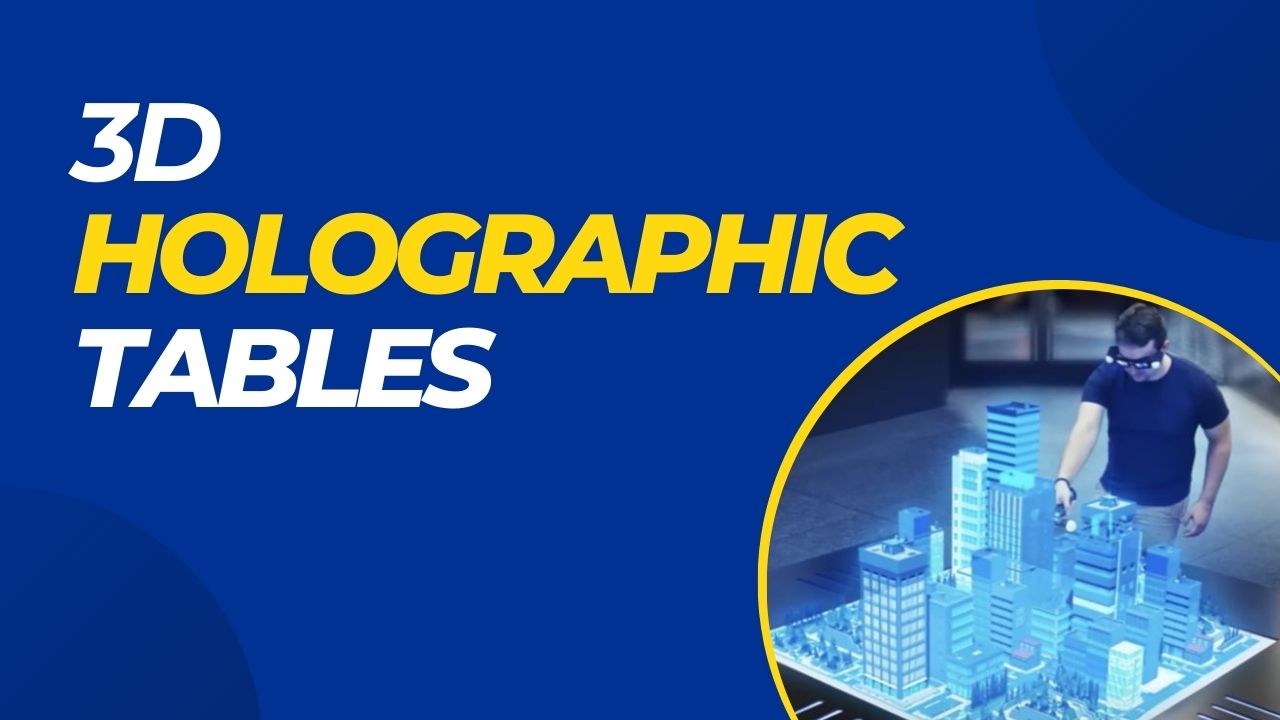Some incentives occupy the assumption sufficiently such as 3D holographic tables in the sphere of technological enhancements. This unforgettable equipment mixes the virtual and physical worlds smoothly providing an exceptional and interactive insight that can modify several industries. Explore and select the most appropriate holographic displays with one of the premier 3D holographic display providers i.e., Vision3D. The 3D hologram table revisualizes how we engage with data and interact with our surroundings like education, entertainment, healthcare, and design. In this article, we will provide complete information about 3D holographic tables.


Embark on a journey into the forefront of innovation with 3D holographic tables. Immerse yourself in a groundbreaking fusion of cutting-edge technology and sophisticated design. Discover how these futuristic tables are reshaping the way we interact, pushing the boundaries of user experiences to new heights. Dive headfirst into the captivating holographic realm today and witness the future unfold before your eyes.
Understanding 3D Holographic Tables
A 3D holographic Table is a complex part of hardware that uses top-notch techniques to launch three-dimensional pictures onto a flat surface at its core. Despite traditional displays which depend on 2-dimensional images, Holographic tables develop the depth and perspective illusion providing users with an experience of engagement that is unmatched.
Key Components of 3D Tables
A typical 3D hologram table consists of various crucial features detailed below.
- Projection System – This feature creates the core of the holographic table accountable for producing and directing the holographic pictures onto the surface. Modern projectors with high-resolution capacities are used to ensure realistic and creative visuals.
- Sensing Technology – 3D holographic tables are outfitted with sensors that find user engagements and gestures to allow immersive functionality. These sensors can trace the processes in real-time permitting users to modify and engage with holographic objects smoothly.
- Processing Unit – A strong processing unit controls the difficult measurements required to reproduce and depict 3-dimensional pictures in real-time behind the scenes. This unit confirms seamless presentation and reactive engagements even with ultimate holographic scenes.
Applications of 3D HoloTables
The flexibility of 3D tables makes them perfect for several applications across various industries.
- Entertainment – Holographic tables provide an engaging zone for virtual reality insights, engaging storytelling, and gaming in the sphere of enjoyment. Users can move into the virtual globes and interact with atmospheres and characters in extraordinary patterns.
- Education and Training – A 3D hologram table grips strong possibilities in the field of training and education. These tables can improve knowledge and restoration across variable subjects like engaging 3D models, virtual simulations for hands-on learning, and anatomy lessons.
- Healthcare – Holographic tables can help in medical conception, patient education, and surgical planning in healthcare settings. Doctors can monitor detailed 3D shows of anatomical structures providing more appropriate treatment plans and diagnoses.
- Design and Engineering – Engineers, architects, and designers can use holographic tables to develop and conceptualize difficult prototypes and models. The ability to engage with 3-dimensional designs in real-time simplifies the design procedure and features association among team members.
- Retail and Marketing – Holographic tables provide inventive remedies for product presentation and engaging advertising. Retailers can curate engaging shopping familiarities enabling consumers to associate with virtual product exhibitions and browse components in detail.
Challenges and Future Prospects
They also encounter multiple troubles involving technical restrictions, price barriers, and content development difficulties though 3D hologram tables capture strong commitment. Plus, assuring smooth association with established applications and workflows remains an important concern for extensive appointments.
Observing further, recent developments in software and hardware techniques are imagined to indicate several troubles making holographic tables more attainable and realistic for different industries. Moreover, as the desire for interactive and engaging insights continues to develop, the market for 3D hologram tables is committed to an important stretch in the coming years.
Conclusion
So, 3D tables show a stunning invention with the capacity to convert multiple industries. By mixing the virtual and physical worlds smoothly, these types of types of equipment provide unmatched engagement and interactivity. This paves the way for new opportunities for education, entertainment, design, healthcare, and beyond. The future of 3D hologram tables seems to be committed, driven by recent technical developments and an emerging desire for engaging insights in the digital time though troubles stay. To know more about 3D Holo products, connect with Vision3D customer care number – (+91)-8971953451.
